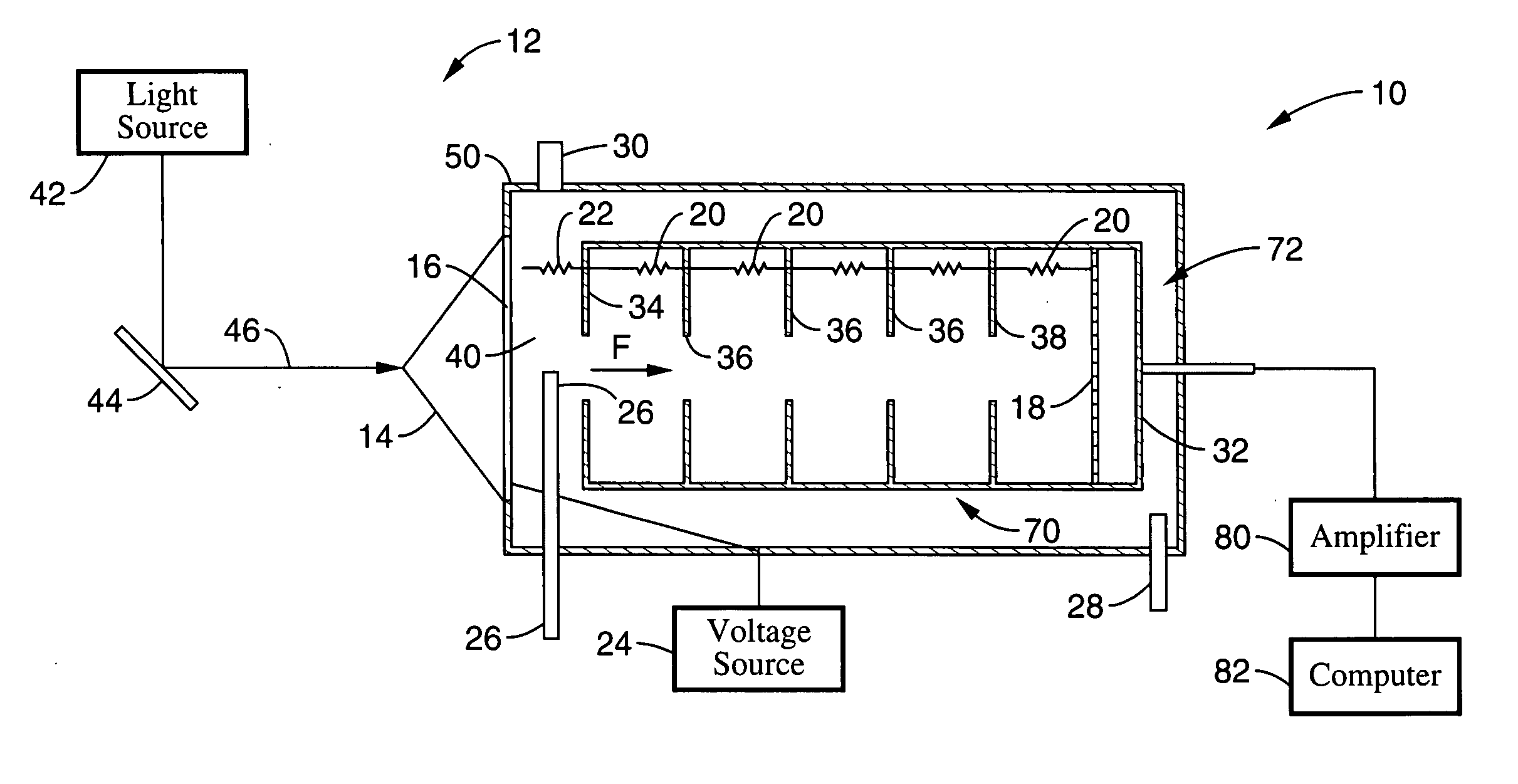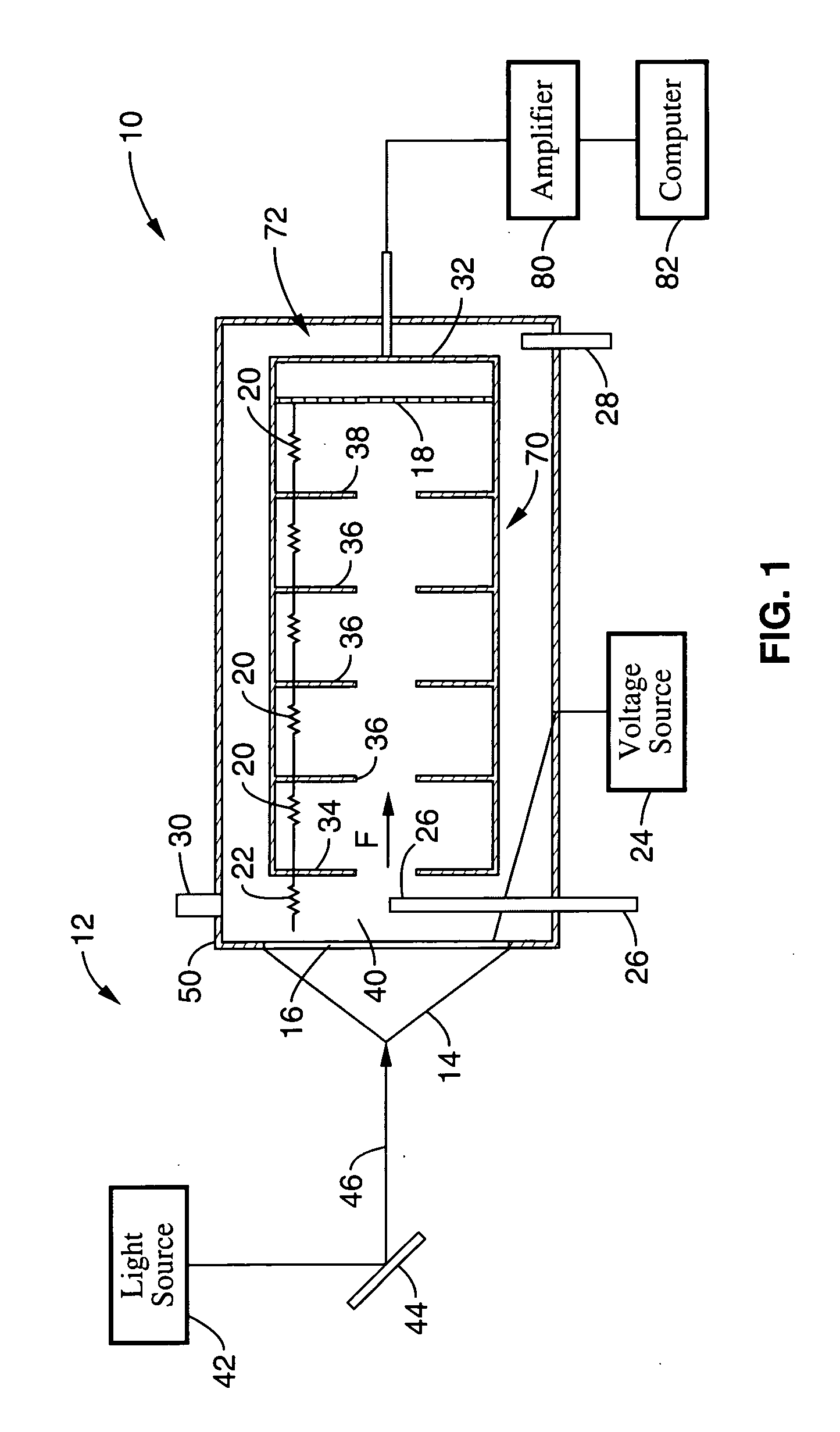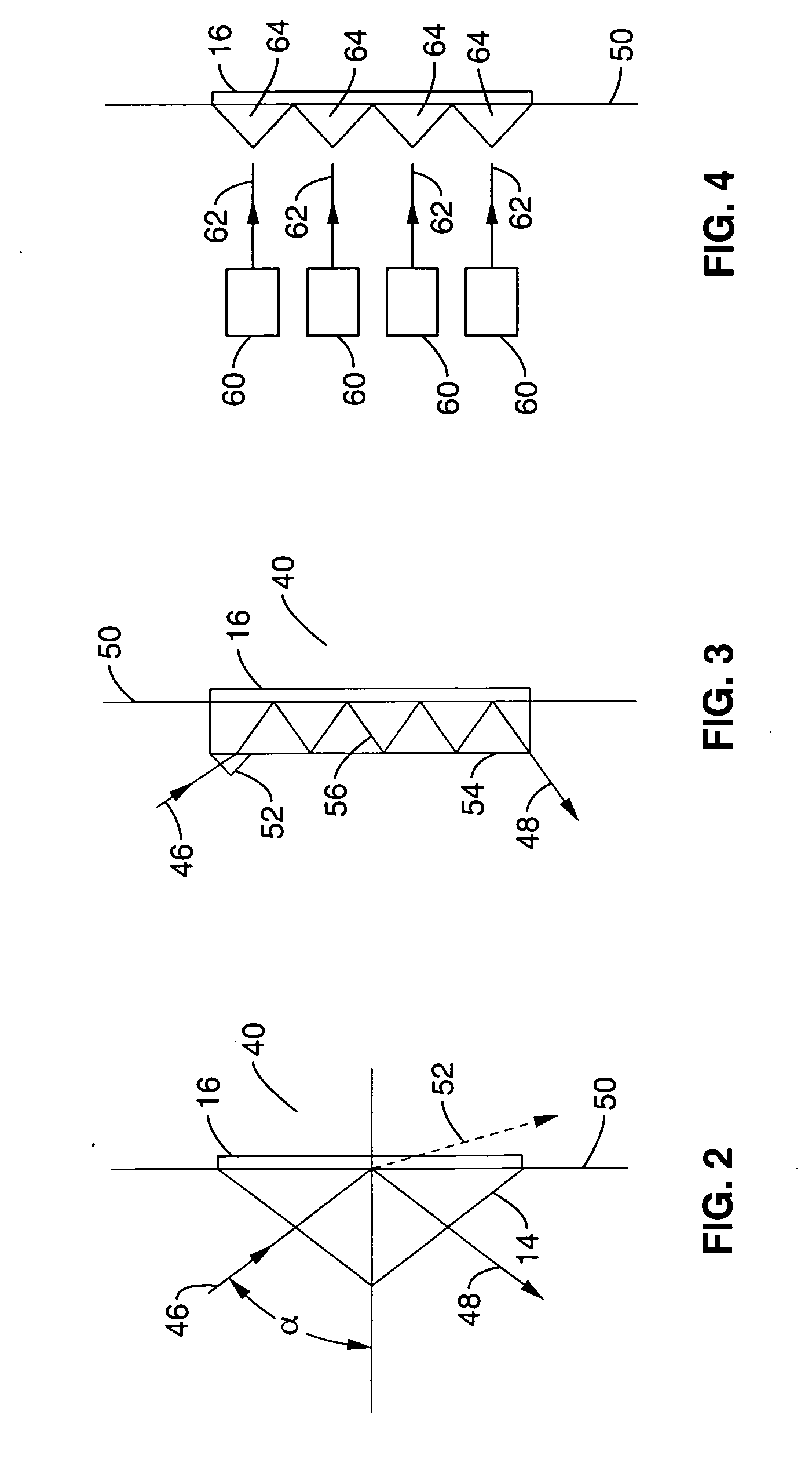Photoemissive ion mobility spectrometry in ambient air
a technology of ion mobility and ionization chamber, which is applied in the field of ion mobility spectrometer, can solve the problems of low free electron count and sensitivity, and the possibility of photochemical reactions in the ionization chamber, so as to avoid the photochemical reactions of analytes, enhance the nitro-organic signal, and enhance the photo-emitted current
- Summary
- Abstract
- Description
- Claims
- Application Information
AI Technical Summary
Benefits of technology
Problems solved by technology
Method used
Image
Examples
Embodiment Construction
[0049] Referring more specifically to the drawings, for illustrative purposes the present invention is embodied in the apparatus generally shown in FIG. 1 through FIG. 13. It will be appreciated that the apparatus may vary as to configuration and as to details of the parts, and that the method may vary as to the specific steps and sequence, without departing from the basic concepts as disclosed herein.
[0050]FIG. 1 illustrates a schematic diagram of a photoemissive ion mobility spectrometer 10 in accordance with the present invention. The IMS system is comprised of three main parts: (1) a photoemissive ionization source 12 for generation of free electrons; (2) a drift tube 70, for separation of ions; and (3) a detector 72 for detection of ions.
[0051] The photoemissive source 12 generally comprises a light source 42 that is configured to direct a beam of light 46 at optical element 14. The backside of optical element 14 has a metal coating or plating 16, which is positioned at the o...
PUM
 Login to View More
Login to View More Abstract
Description
Claims
Application Information
 Login to View More
Login to View More - R&D
- Intellectual Property
- Life Sciences
- Materials
- Tech Scout
- Unparalleled Data Quality
- Higher Quality Content
- 60% Fewer Hallucinations
Browse by: Latest US Patents, China's latest patents, Technical Efficacy Thesaurus, Application Domain, Technology Topic, Popular Technical Reports.
© 2025 PatSnap. All rights reserved.Legal|Privacy policy|Modern Slavery Act Transparency Statement|Sitemap|About US| Contact US: help@patsnap.com



